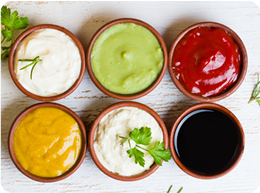Tell us your needs and get
a Free Consultation!
get in touch
%201.png)
We love creating human connections that make a difference for our clients. And we would love to connect with you.




We are committed to providing proactive, comprehensive, and compassionate care that prioritizes you at the centre of your health journey.

We believe in accessibility as a point of entry and a continuous thread that runs through every aspect of your care.

We build lasting relationships to support you living your best life rather than just addressing one-time needs.
Stay in the loop with the latest news and updates from Serefin Health through our quarterly newsletter, SerefinRx. Whether you regularly engage with our team or have no immediate health concerns, keeping up to date on current health information empowers you to make informed decisions that benefit your well-being. Packed with valuable information, each issue offers a wealth of content, including company updates, health education, and much more.

At Serefin Health, our primary focus is the well-being of our clients, and we are committed to going above and beyond to ensure the quality of your care and your satisfaction.
Our knowledgeable team of healthcare professionals is at the core of our service. With their unwavering dedication and expertise, they work collaboratively to provide compassionate and empathetic care that addresses your unique needs.

We take great pride in advocating on your behalf and strive to empower you to take an active role in your health and well-being, providing you with the knowledge and resources necessary to make informed decisions about your health. We are here to support and guide you every step of the way.
We foster a culture centered around teamwork and a shared commitment to finding innovative solutions to complex problems. By promoting continuous learning and improvement, we stay at the forefront of advancements in the field, enabling us to provide you with the highest quality of care.
Artificial intelligence (AI) is no longer confined to labs—it’s now reshaping everyday healthcare. From quicker diagnoses to virtual health assistants, AI is transforming how care is delivered. While promising, it also raises concerns about fairness, accuracy, and trust. In this issue, we explore how AI is helping patients, the hurdles it faces, and how it’s shaping the future of healthcare.

AI is making tangible changes in how patients experience healthcare. Virtual assistants now handle insurance questions, refill prescriptions, and provide 24/7 support. In diagnostics, AI helps detect diseases like cancer earlier and more accurately, enabling faster second opinions. Algorithms are also tailoring treatments based on individual genetics, lifestyle, and medical history. Meanwhile, AI automates admin tasks—like scheduling and interpreting lab results—giving clinicians more time to focus on patients. At Serefin Clinic, for example, software like AutoScribe by Mutuo Health, an AI‑powered digital assistant that transcribes clinician–patient conversations in real time, generates structured clinical notes, and integrates seamlessly into the EMR to minimize manual documentation. Patients benefit significantly when clinicians are free to focus on listening attentively, instead of note-taking.

Despite progress, AI has clear limitations. Bias remains a major issue—when training data lacks diversity, AI can produce unfair outcomes. For example, underrepresented women’s symptoms or racial disparities in datasets can lead to misdiagnoses or poor care recommendations.
Some AI tools prioritize efficiency over clinical depth, missing key aspects of patient care. Unlike human providers, AI lacks empathy and contextual understanding, reinforcing the need for human oversight.
Data privacy is another serious concern. AI relies on large datasets, but how that information is used matters. In 2023, the U.K.'s NHS faced backlash for sharing patient data with a private company without clear consent—raising alarms about misuse.
To ensure everyone benefits safely, AI must be developed with fairness, transparency, and privacy protections at its core.

As AI tools like symptom checkers and health apps grow, earning patient trust is critical. Many still worry about data use and the loss of personal connection.
Human compassion remains irreplaceable. Emotional understanding and communication foster trust, ease anxiety, and support healing in ways technology cannot. AI should support—not replace—skilled and empathetic healthcare professionals.
With ethical oversight and a focus on patient experience, AI can improve diagnosis, personalize care, and expand access—especially in underserved areas. The future of healthcare depends on in combining innovation with human care.
Summer is all about relaxing and enjoying delicious food. Try these customizable BBQ skewers packed with your favorite veggies - like bell peppers, tomatoes, onions, zucchini, or mushrooms. For protein, use grilled chicken, high-protein tofu for a vegetarian option, or pair with salmon for a pescatarian twist. Easy, healthy, and perfect for summer grilling!
Heading out for a picnic without a grill? No problem! Pack a cooler with energizing, no-cook options like pasta salad, chopped fruits and veggies, and pre-made salads (keep the dressing on the side). Prioritize high-protein foods to keep you fueled for fun in the sun.

Pro Tip: Make your plate colorful with fruits and veggies and aim for at least one-quarter protein. Stay hydrated with plenty of cold water or electrolyte-rich drinks—about 1-2 glasses per meal is a good rule. Tips for a healthy summer picnic
- Salsa : Low in sugar and calories, great for burgers or wraps
- Greek yogurt : A high-protein sub for sour cream
- Nutritional yeast : Dairy-free, cheesy flavor for sauces or soups
- Balsamic vinegar : Antioxidant-rich and delicious on salads or bruschetta

Eat well, stay cool, and enjoy the outdoors!
.png)
Measles is one of the most contagious viral infections. It spreads through the air when an infected person coughs or sneezes, or by touching fluids from an infected person’s nose or throat.
Timeline:
.png)
.png)
Once someone recovers from measles, they are immune for life.
Who Is at Risk?
Getting Vaccinated:
.png)
Adults born in 1970 or later should have two doses if they haven’t been vaccinated before. While those born before 1970 are usually immune, they may still need the vaccine if at higher risk due to work, travel, or studies.
If you’re unsure about your vaccination status, talk to your healthcare provider or your Serefin Care Coordinator.
.png)
This World Breastfeeding Week (August 1-7), we’re celebrating every parent and every path to nourishing a baby. Breastfeeding your baby is amazing. Formula feeding your baby is amazing. However you feed, the most important goal is a thriving baby and a thriving parent.
For those who choose to breastfeed, support can make a big difference. If you’re struggling, you’re not alone — help is available. Reach out to your primary care provider, a Public Health-funded lactation consultant (LC), or a private LC. They can help guide you through common challenges like latch issues, low milk supply, or discomfort.
Speaking of discomfort—painful, dry, or cracked nipples may need medical attention. These symptoms can interfere with breastfeeding and may signal an underlying issue. Don’t wait—talk to your provider so you can get back to feeding comfortably.
Worried about milk supply? Many parents benefit from strategies like power pumping or adjusting feeding patterns. Again, your primary care provider is a great first step for personalized guidance.
Breastfeeding also brings additional benefits, especially during cough, cold, and flu season. Breast milk passes antibodies from parent to baby, offering extra protection against common infections.
Vitamin D supports healthy bone growth and prevents rickets in infants. Since breast milk doesn’t contain enough vitamin D, breastfed or partially breastfed babies need 400 IU daily from birth until they drink 32 oz of fortified formula. Formula-fed infants drinking less than that also need supplementation.
It’s also important to acknowledge that breastfeeding and mental health are deeply connected. For some, it’s a soothing and bonding experience. For others, it can be exhausting—especially combined with sleep deprivation or feeding difficulties. If you're struggling emotionally, it’s okay to ask for help. Postpartum mental health is just as important as physical recovery.
At the end of the day, no matter how you feed your baby, your love and care are what truly matter. Let’s celebrate every feeding journey and support parents at every stage of the process.
.png)
It’s that time of year again. The backpacks are out, routines are shifting, and the air buzzes with both excitement and tension. For many families, this season feels like standing at the edge of a whirlwind. Mom’s juggling work calls while packing lunch. Dad’s searching for clean socks. The youngest is anxious about a new teacher. And their eldest, on the autism spectrum, is quietly overwhelmed by the thought of change.
Transitions, especially the return to school, can feel like emotional earthquakes. Kids, neurotypical or neurodivergent, may show it in different ways: sleep issues, clinginess, tummy aches, or meltdowns. But instead of bracing for chaos, some families try something different this year: mindfulness.
Mindfulness isn’t about perfect calm or quiet. It’s about noticing what’s happening right now, inside and out, without judgment. One morning, they start small. Before the rush, they sit for one minute. No talking. Just breathing together. The littlest one picks a “mood color” from a chart. The eldest squeezes a soft fidget. It’s peaceful, not magical, but it helps.
Throughout the week, they keep weaving mindfulness into everyday life. A visual schedule eases the morning chaos. A breathing song becomes the cue for leaving the house. After school, they each name something that felt good or hard. Their teen prefers solo walks with noise-canceling headphones and logs feelings using emoji apps. No pressure to share, just options to connect in their own way.
For the parents, mindfulness becomes a quiet anchor. A few deep breaths before pickups. A reminder whispered in tough moments: “This is hard, but we’re doing our best.” They model calm, not perfection. When stress shows up, they say it out loud: “I’m overwhelmed, so I’m going to take a moment.” The kids notice and learn.
Over time, their home shifts. They create a “cozy zone” with soft pillows and dim lights. Meltdowns aren’t treated as problems to fix, but messages to listen to. Scripts like “You’re safe, we’ve got this” replace hurried discipline. Even when things go off the rails (and they do), there's more space to come back to the center.
The back-to-school transition isn’t easy, but it feels different this time. Not because the stress is gone, but because the family meets it with presence and compassion.
You don’t need hours of meditation or perfect calm. You just need one breath. One pause. One moment of connection. That’s where mindfulness begins.
So try it today. Sit with your child. Set a timer for one minute. Breathe together. No fixing, no pressure, just being.
That’s mindfulness. That’s enough.
Here are some excellent online resources dedicated to the above topic:
.png)
Whether it's your best friend raving about the 16:8 window or your coworker casually skipping breakfast, intermittent fasting (IF) has become a hot health topic. But is it just a trend—or something backed by science?
Let’s explore what it is, why it’s catching on, and how to know if it’s right for you.
Intermittent fasting is not a diet, or a fad. It’s simply an eating schedule—focused on when you eat, not necessarily what you eat (though nutrition matters too).
Some methods include:
There’s no single “perfect” fasting window for everyone. But there are some general guidelines, especially based on fitness and biological sex.
The 16:8 intermittent fasting method is one of the most common and researched approaches. It, may support fat metabolism, cellular repair, and long-term sustainability for many people.
Start with 12:12 or 14:10 to ease into it. Going too aggressively at first can make fasting feel unsustainable.
.png)
Weight management – Helps limit calorie intake by narrowing your eating window
.png)
Blood sugar balance – Improves insulin sensitivity
.png)
Boosts cell repair – Fasting triggers autophagy, your body’s clean-up crew
.png)
Mental clarity – Many feel sharper while fasting
It can—but timing and intensity matter.
Fasted Workouts
.png)
This provides fuel for your workout and helps protect muscle mass.
.png)
Drink extra water while fasting.
.png)
Stop if you feel dizzy or light-headed.
.png)
Break your fast with protein + carbs to support recovery.
Intermittent fasting works best when paired with intuitive eating.
.png)
Women—especially perimenopausal—may have greater sensitivity to prolonged fasting due to hormonal cycles. Some studies suggest fasting beyond 14 hours may affect estrogen balance or cortisol levels. A 14:10 or even 12:12 schedule may be a better starting point for women.
Tip: Listen to your body—especially if you notice fatigue, mood swings, or changes in your cycle.
.png)
Women may experience cortisol spikes and energy crashes during fasted high-intensity exercise, particularly during the luteal phase (the week before menstruation).
Tip: Try strength training or HIIT during your eating window if you're feeling drained while in your fasting window.
Acceptable for:
Healthy adults looking to manage weight, balance blood sugar, or simplify meals.
Caution if you are:
Note: It is important to always check with your primary health provider before starting a fasting routine.
Intermittent fasting is a tool—not a cure-all. It works best when paired with:
.png)
A balanced diet
.png)
Regular movement
.png)
Good sleep
.png)
Low stress
But remember, the best routine is one that fits your life! Talk to your primary health provider if you think Intermittent Fasting may be something you are interested in.
.png)
While the 16:8 method (16 hours of fasting, 8 hours of eating) is the most talked about, there’s no magic number. Research shows that even shorter fasting windows, like 12:12 or 14:10, can improve insulin sensitivity and support metabolic health.
.png)
The key is consistency and choosing a schedule that fits your lifestyle. Don’t force yourself into a routine that doesn’t work.
.png)
IF isn’t a way to only eat nachos and milkshakes. The quality of your food still matters. Fasting helps regulate when you eat, but what you eat plays a major role in your results.
.png)
Focus on whole foods, lean proteins, fiber, and healthy fats to maximize the benefits of IF. Think of fasting as the structure, and nutrition as the foundation
.png)
Intermittent fasting isn’t a one-size-fits-all solution. People with certain health conditions (like diabetes, eating disorders, or those who are pregnant or breastfeeding) may need a different approach. And for some, fasting simply doesn’t feel good—and that’s okay.
.png)
The key is consistency and choosing a schedule that fits your lifestyle. Don’t Always talk to a healthcare provider before jumping into fasting, especially if you have preexisting conditions or take medications.force yourself into a routine that doesn’t work.
We truly appreciate the time and dedication you invest in researching and writing thoughtful, valuable articles—especially while serving your valued clients. Your expertise and effort help us deliver meaningful insights that strengthen the trust and relationships we have with those we serve.
.png)
Senior Physician
BMSc, M.D, MSCP, CCFP
.png)
Registered Nurse
BScN
.png)
Registered Practical Nurse
RPN
.png)
Manager
Virtual Nursing Team, Registered Nurse, BScN
.png)
Care Coordinator
Registered Practical Nurse, RPN
.png)
Care Coordinator
Registered Nurse, BScN

Care Coordinator
Registered Nurse, BScN, BSc
.png)
Care Coordinator
Registered Nurse, BScN, BSc, MSc
We hope you've enjoyed this edition of SerefinRx and found it informative and inspiring.
With our patients always at the heart of what we do, we continually strive to enhance your experience and ensure you receive the highest quality of care. We are committed to supporting your health and wellbeing every step of the way.
We kindly request one minute of your time to complete this survey, as your answers will contribute to improving our Newsletter.
Start SurveyNavigating complexity, simplifying life.
© 2025 Serefin Inc. All rights reserved.
Serefin, 65 Front St. E., Suite 101, Toronto, ON M5E 1B5, Canada